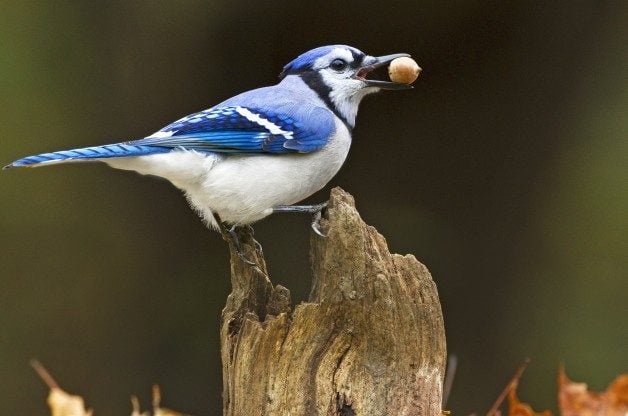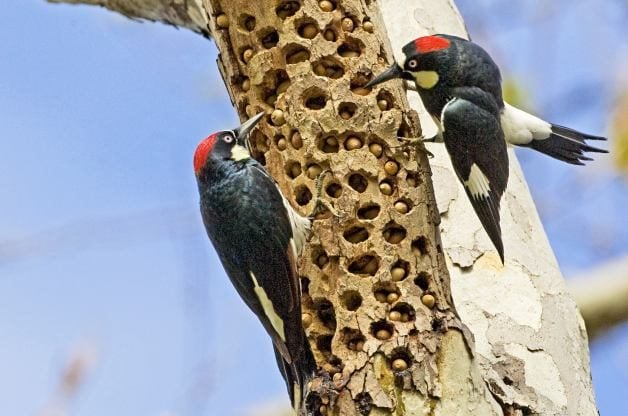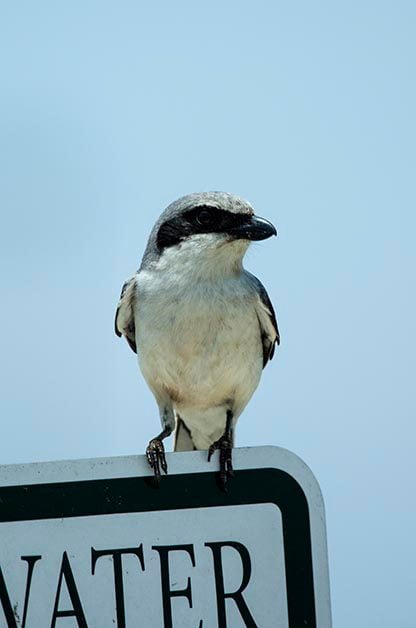Fascinating Bird Behavior: Caching Food
Updated: Jan. 14, 2022
Birds carry seeds off from feeders. But where do they go, and how do they find the food again? Learn more about this caching behavior.

“Why isn’t that bird eating the seed?” asked an 8-year-old boy as we watched a collection of bird feeders through a window. “He just grabbed a piece and flew away.”
It was late autumn, and nearly all the leaves were gone from the surrounding birches and aspens. The bird, a black-capped chickadee, had just made a very quick visit to a platform feeder, grabbed a black-oil sunflower seed from the heap and fluttered off into the snowy spruces. That youngster had observed something most people miss. I asked him what he thought the bird was doing.
“Saving it for later?”
This kid was a biologist in the making. He was right. The feeder was alive with birds coming and going. The boreal forest of interior Alaska that surrounded us was filled with the calls and chitters of boreal and black-capped chickadees, common and hoary redpolls, and a few musical notes of pine grosbeaks. The redpolls and grosbeaks lingered around the feeders, stuffing themselves in the near-freezing air.
But the chickadees came and went, came and went, never staying long. It was impossible to tell how many there were—maybe five, maybe 50. Back in the forest, the chickadees were stashing their seeds beneath the trees’ peeling bark, or tucking them into cracks in the wood. Ultimately, they would cache hundreds and hundreds of seeds like Easter eggs throughout their territory. And they have a remarkable ability to remember every hiding place.

What Kinds of Birds Cache Food?
Chickadees aren’t alone in this bird behavior. Birds such as woodpeckers, shrikes, jays, titmice and nuthatches display similar habits.
The acorn woodpecker has an especially fascinating—and labor-intensive—strategy. It gathers acorns and takes them to a single tree with many small excavated cavities. Then it places the acorns in the cavities—one per hole. The bird firmly taps each nut into its hole, but not so tightly that the acorn is difficult to extract.
The hitch in the system is that the nuts shrink as they dry, so they each must be transferred to a new hole. It’s a game of constant maintenance, with the birds continually moving back and forth across their cache adjusting seeds, moving them to new holes, and flying off to gather more. The season for finding acorns is short, and the woodpeckers make the most of it, gathering and stowing hundreds and hundreds of nuts over the course of a few weeks. Safely stored away, those acorns provide an important source of food over the rest of the year.
Shrikes Cache Their Prey

Far less delicate than the careful organization of acorn woodpeckers is the gruesome behavior of northern and loggerhead shrikes. These two species, which look much alike, are often mistaken for mockingbirds or jays. Medium in size and gray, black and white in color, they tend to be overshadowed by flashier species.
Look closely at a shrike, however, and some more sinister features appear. Its eyes are large, sharp and black, seeming to point forward, like a predator’s. The bill is long and strong, its tip armed with a nasty down-curving point, much like a hawk. These features betray the shrike as something more than the songbird it resembles. Shrikes are fierce predators. Using their sharp bills, they hunt small rodents, insects and other birds. But it isn’t their hunting skills that have earned them the nickname of butcher bird.
Recently, I was camped along a wild, remote river in the Arctic National Wildlife Refuge of northeastern Alaska. Tall willows surrounded my camp. Every day, I watched a pair of northern shrikes fly through the trees. Late one evening, I saw one of the pair fly across the river, returning a few minutes later carrying a dead vole in its feet. Soon it flew past again, unburdened, across the river. Ten minutes passed and it was back, another vole clenched firmly in its feet. In all, I saw five trips back and forth and five freshly killed voles.
The next day I wandered back into the willows where I assumed the birds’ nest was hidden. I didn’t find the nest, but I did find a dead vole impaled on a broken willow branch 5 feet off the ground. Further investigation revealed two more voles, hung like macabre Christmas ornaments. The shrikes were taking advantage of a good hunting spot and caching their prey for later use—a brutal bird behavior, perhaps, but a highly effective way to ensure a steady food supply for their young.
How Do Birds Remember Hiding Spots?
With some birds using hundreds of caches, the memory required to find what’s been stored is no small thing. Some species, the chickadees and titmice in particular, have a straightforward physiological response to the need for memory: Their brains grow. The hippocampus, the portion of the brain responsible for memory, increases in size in these species during the autumn and winter and then decreases in spring and summer. Other caching species don’t share this amazing capacity. Researchers hypothesize that these birds don’t actually recall all the food locations; instead, they simply stock their territory, then “reforage” for their caches during the winter.
Brainy birds: Meet America’s smartest bird species.
Whether it’s jays caching peanuts in the eaves of a house or the gory prey of northern shrikes, food storage is fascinating. But most compelling to me is the chickadee’s astounding memory. Thousands of seeds hidden about the forest, and each is recalled, thanks to a seasonally growing brain. It also makes me grateful that I don’t have to recall where I hid my food; I need only visit the grocery store. Now if only I could find my car keys.
